Up and down! Supporting your child’s sensory development on a hill
- Sensory,
- Outdoors
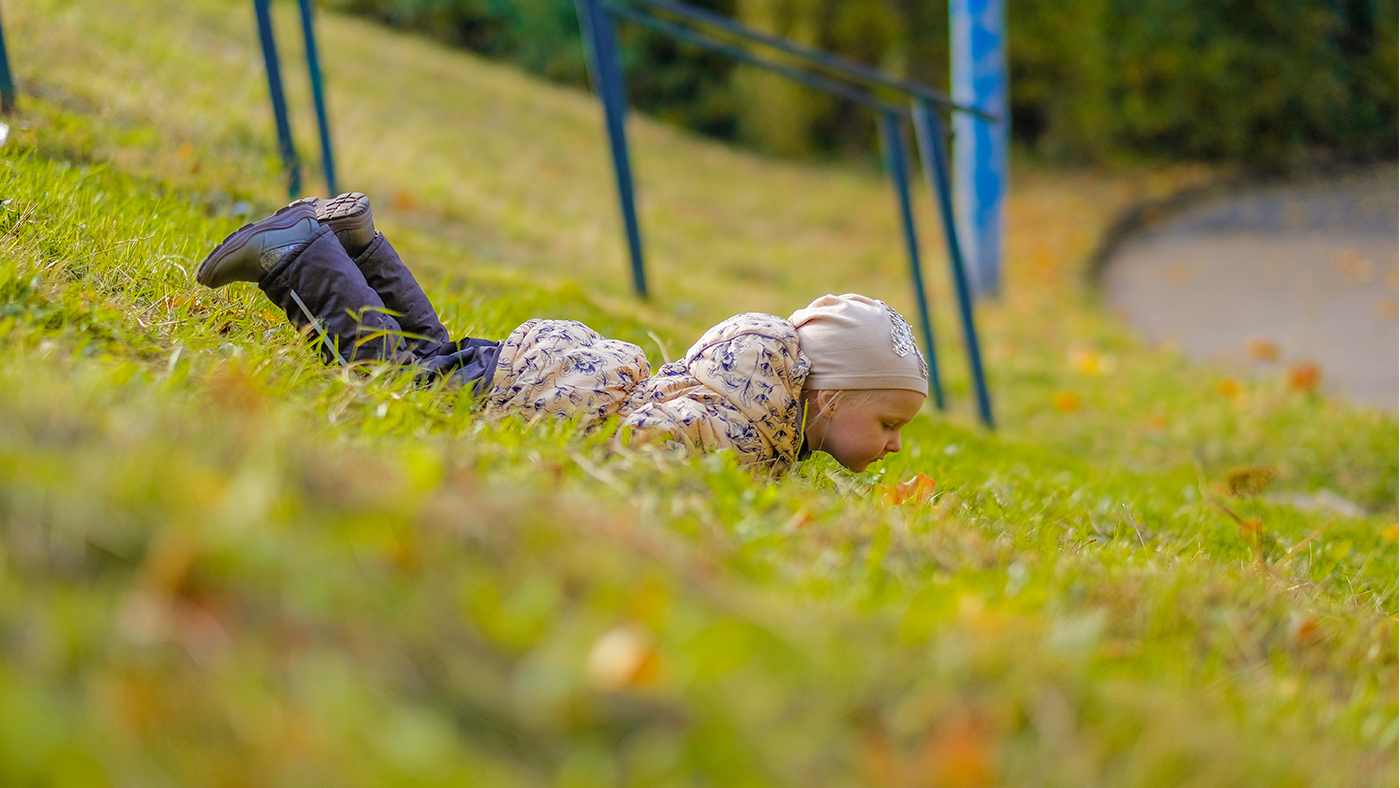
Going outside with your baby or child gives them the chance to explore the world in a different way, they can move more, notice changes in weather and see, hear and touch things that they won’t find inside. Playing on a hill provides a particular challenge and a unique set of experiences, in this blog we will focus on the opportunities presented for supporting sensory development.
Rolling: balance
A hill provides a perfect place to explore and develop balance and posture. As long as you find a hill that is not too steep, and that has a safe place to stop at the bottom, your child can practise rolling down the hill.
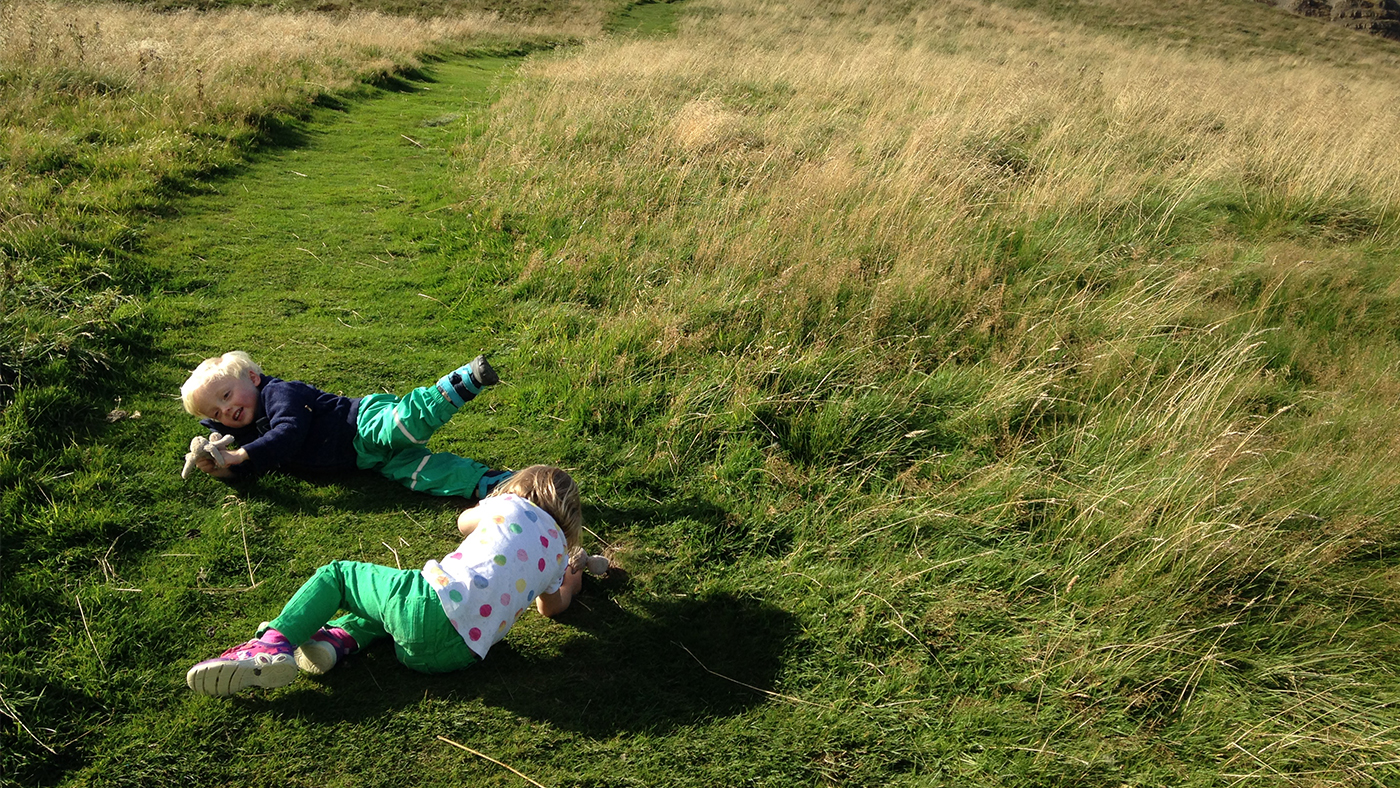
Rolling stimulates your child’s vestibular system, which helps them to maintain and control their balance and posture. Although rolling down the hill might make your child feel a bit dizzy using their eyes to focus and regain their balance will help them to develop their balance system.
Some children don’t like the sensation of rolling, and your child might be too young to control the movement enough for this to be an activity that you would want them to do just yet. If your child is unsure, they could start rolling right at the bottom of the hill at first, so they just roll a little way at first.
Looking and Listening: vision and hearing
Going up to the top of a hill gives a different view of the world, your child can see things from a different perspective and look at things that are far away. Looking at things from the top of a hill will help your child to develop their visual discrimination, you could ask them to spot certain things so they need to scan and pick out particular features or objects.
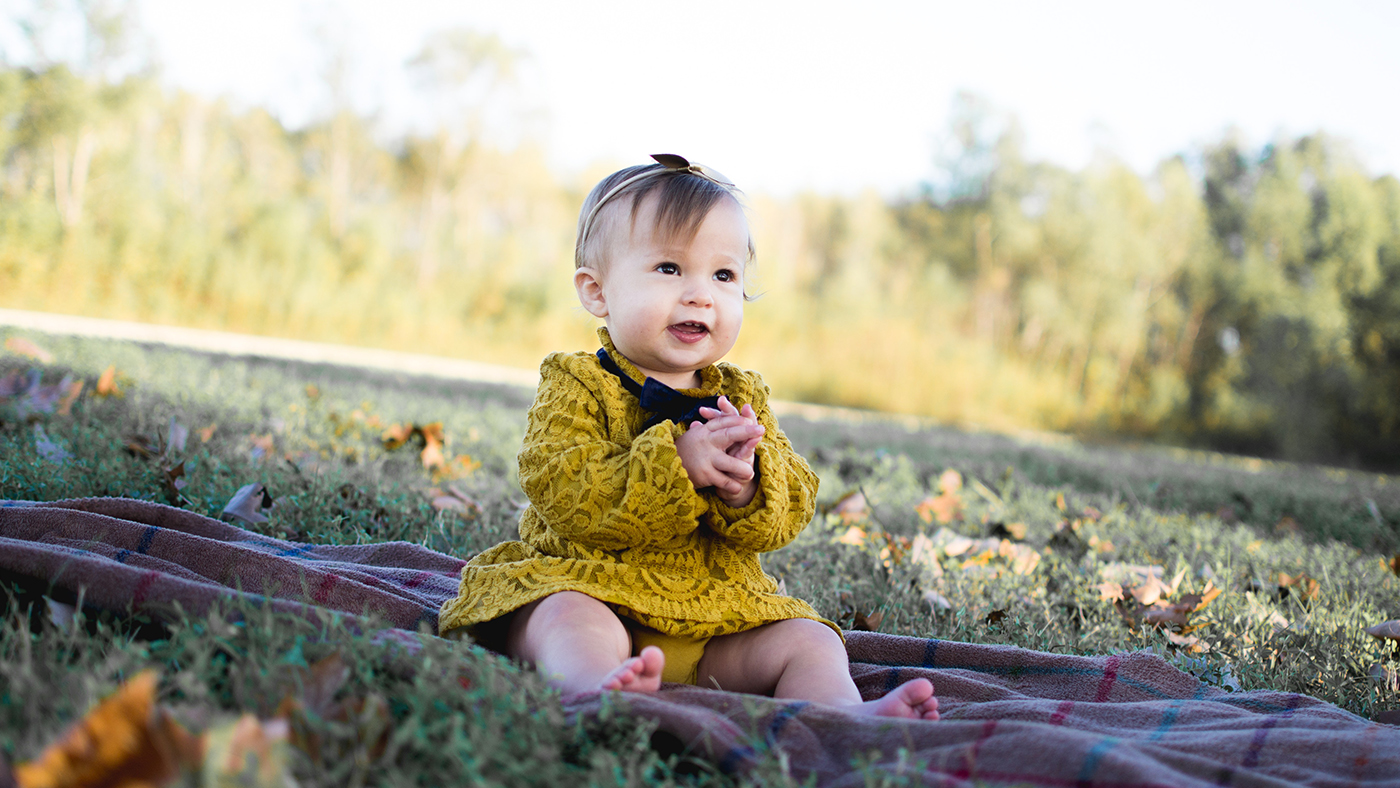
Listening when you are outside is great for getting your child to notice and pick out different sounds and being at the top of a hill provides a different perspective on the soundscape as well as on the landscape! Your child can listen and identify sounds that are below them as well as sounds that are coming from above. If you can find a nice spot you could put a blanket down on the floor and watch and listen together.
Pushing and pulling: proprioception and interoception
Walking, bounding or running up and down a hill is a different experience to moving on flat ground, this is great for developing strength, posture and balance. Pushing down with each step to walk or run up a hill also gives your child information about where their body is as they stimulate receptors in their joints and tendons that help them to know the position of their body. Your toddler might be happy challenging themselves walking up and down over and over again, you could challenge your child to try going up the hill in different ways.
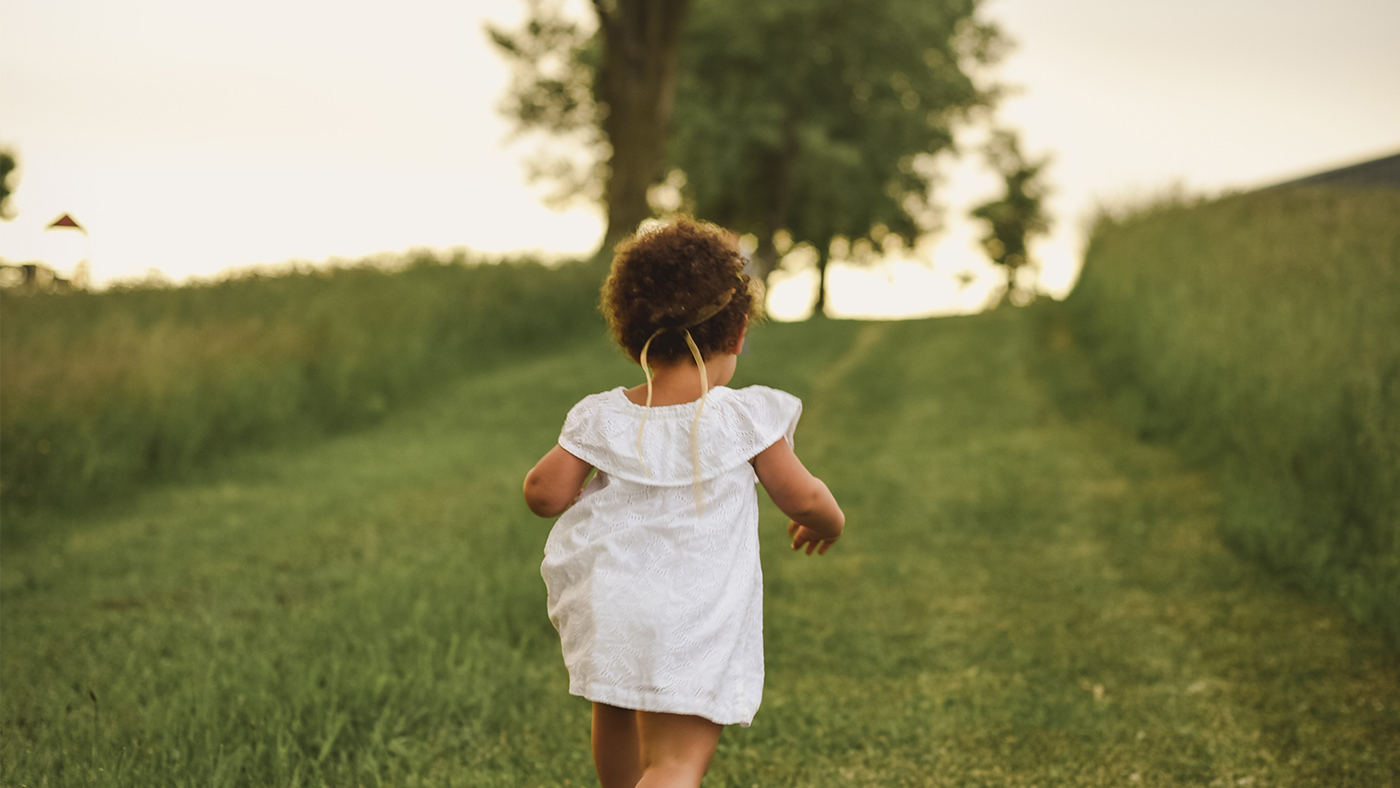
Walking or running up a hill also gives you a perfect opportunity to talk to your child about how moving makes them feel, are they a bit hotter, out of breath or maybe getting thirsty? When you talk to your child about how their body feels you are helping them to develop their interoception, this is their awareness of the sensations that come from inside their body.
Touching and sniffing
And finally, anytime you go outside your baby or child has the opportunity to experience a whole range of sensory stimulation. Depending on where you can find a hill your child might experience different smells, perhaps in the countryside they can smell a nearby farm, or if you find a hill close to the seaside does the air smell different?
When your child is a bit older you could comment on the way different places smell, what does that tell you about what is around you? Does somewhere smell different on a warm day than it does on a wet or cold day? If your child is a bit younger they might not be able to talk to you about what they can smell but having different experiences helps them to build their understanding of the world.
Having walked up the hill you will probably need a rest before going back down, if you can find somewhere to sit this could be a chance for your child to feel the grass or surface around you. They will probably be interested in touching anything that seems unfamiliar and this could be a good time to talk to them about deciding if something is safe. If something looks sharp or prickly then it is probably best not to touch that as it might hurt! If the area around you is safe with no sharp objects then your child could try feeling the ground with their feet, walking barefoot provides a whole different set of sensations and can help your child to maintain their balance.
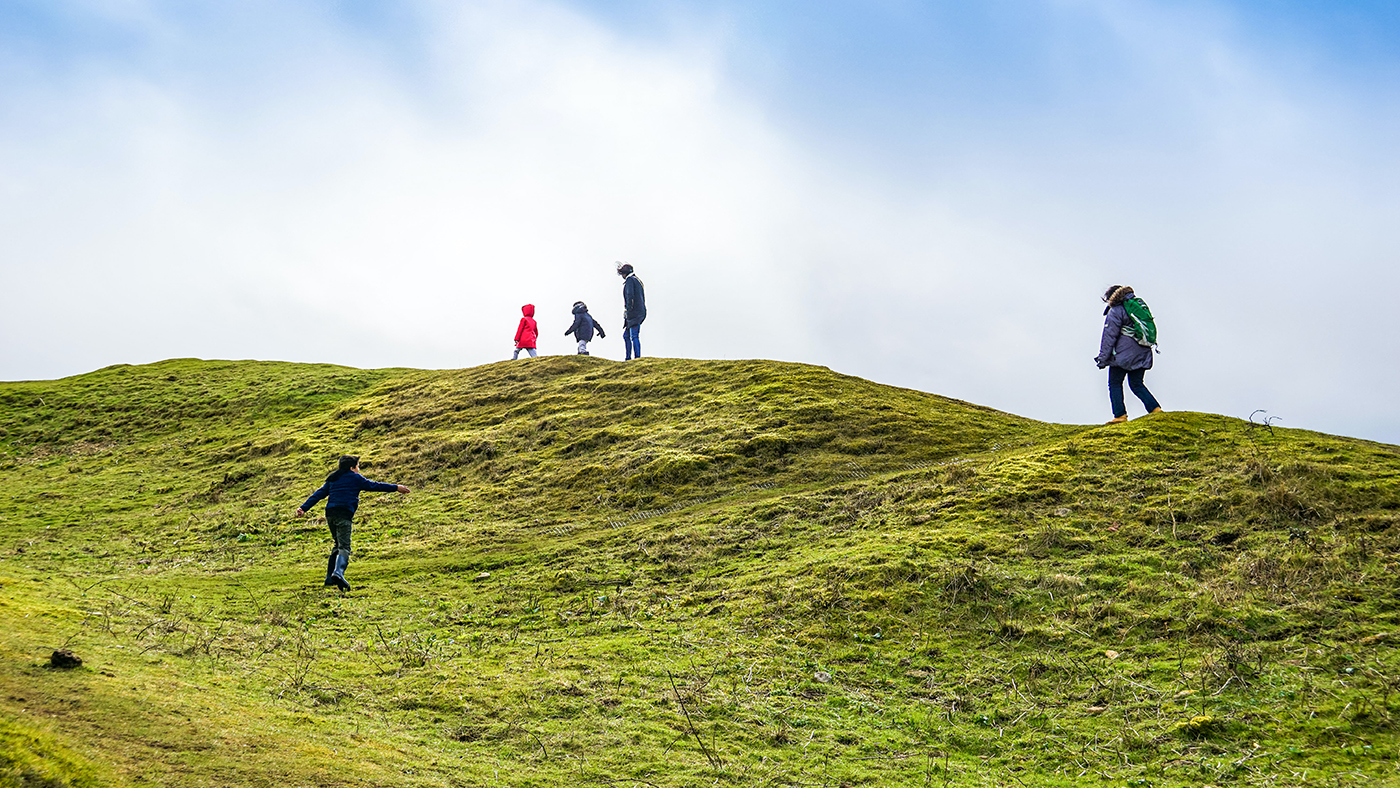
Find a hill and have fun!
Now you just need to find a hill! Have a think about the places close to where you live, does the park have a hill you could go to? Remember your child is much smaller than you so what you might consider to be little more than a grassy slope might feel like a fantastic hill to them!
If you can visit your favourite outdoor places at different times of the year and in different weathers that is even better. Your child might notice the changes that come with the seasons or the different sensations they experience on a wet day and a dry day!